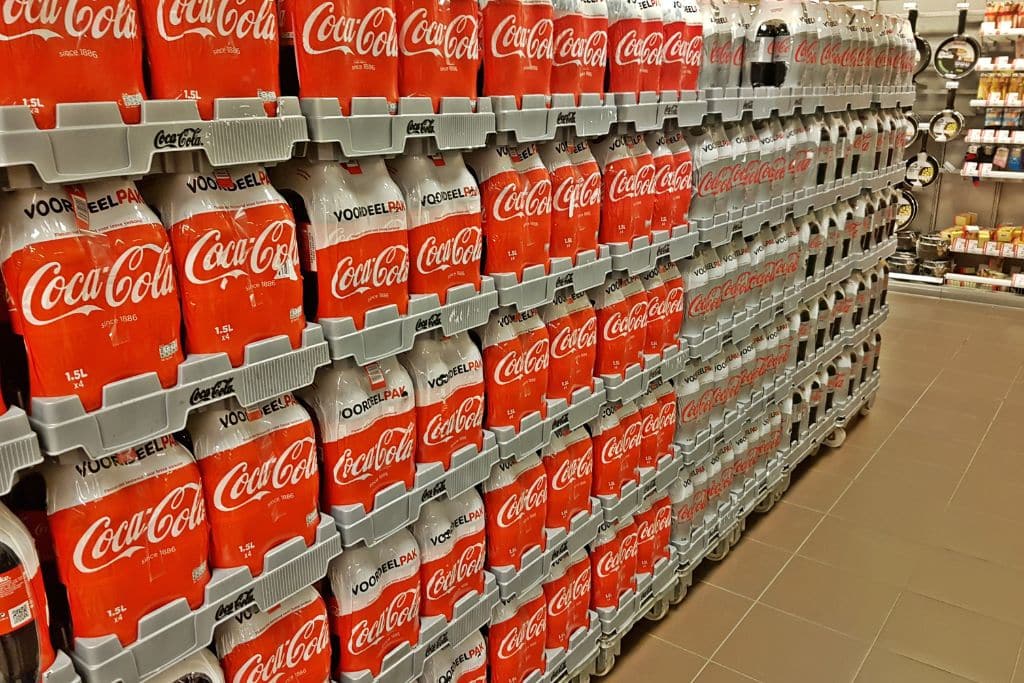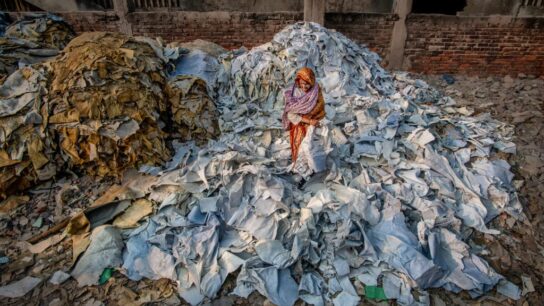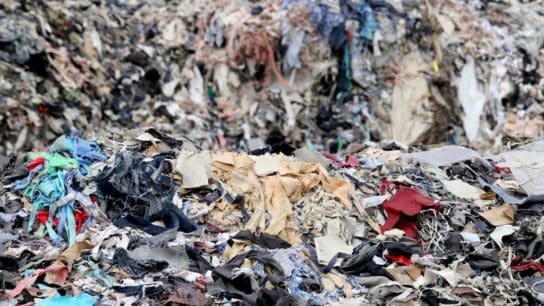Coca-Cola’s plastic waste could grow by 20% by the decade’s end if its practices remain unchanged, advocacy organization Oceana projected.
—
Coca-Cola, the world’s largest non-alcoholic beverage company, is on track to use more than 9.1 billion pounds of plastic annually by 2030, according to a new report by advocacy organization Oceana.
This represents a 20% increase over the company’s most recently reported plastic use in 2023, which Oceana said was already enough plastic to circle the Earth more than 100 times.
The report, published last week, also suggested that the amount of plastic packaging from Coca-Cola expected to enter the world’s waterways and oceans – a staggering 1.3 billion pounds – could be enough to fill the stomachs of more than 18 million blue whales.
The Coca-Cola Company topped the chart of the world’s top branded plastic polluter – responsible for 11% of all branded plastic found in the environment, followed by PepsiCo, Nestlé, Danone and Altria. It currently produces more than 130 billion plastic bottles every year, according to Greenpeace, a significant proportion of the over 500 billion plastic bottles estimated to be sold every year around the world.
Backtracking
Coca-Cola updated its voluntary environmental goals in December, replacing a series of previous environmental pledges concerning water, packaging, climate and agriculture. A pledge announced in 2022 to have at least 25% of all its beverages globally sold in refillable or returnable glass or plastic bottles, or in refillable containers, disappeared from its website, sparking backlash and accusations of greenwashing.
Instead, the company said it is now aiming to use 35% to 40% recycled material in primary packaging – the type of packaging that is in direct contact with the products – including increasing recycled plastic use to 30% to 35% globally by 2035.
Oceana said the company could only bend its plastic curve, meaning it could bring plastic use below current levels, if it were to achieve a 26.4% reusable packaging rate by 2030. The rate stood at 10.2% in 2023, the latest year for which data is available.
Oceana’s Senior Vice President Matt Littlejohn said recycling cannot solve the company’s “out-of-control plastic problem,” but reuse can.
“Single-use plastic bottles made with recycled content can — just like bottles made of virgin plastic — still become marine pollution and harm ocean life,” he said, adding that the company’s reputation as one of the world’s most polluting corporations “is a liability for the future of the company, the oceans, and the planet.”
Coca-Cola Chief Executive, James Quincey, last month warned investors that 25% tariffs introduced by the Trump administration on foreign steel and aluminum entering the US could inflate prices of canned food and drink, ultimately forcing the company to revert to more plastic.
You might also like: These Companies Are Backtracking on Climate in Bow to Conservatives
Global Threat
The world generates 400 million tonnes of plastic waste every year, 60% of which end up in our natural environment and only 9% of which is recycled. Plastic, which is mostly produced from fossil fuels, also contributes 3.4% of global greenhouse gas emissions, comparable to the emissions of the entire aviation industry.
Microplastics – tiny plastic particles measuring less than 5 millimeters in diameter, close in size to a sesame seed, that result from the degradation of larger plastics – have been found in bottled drinking water, human blood and organs, mammal feces, and even the air we breathe. While the long-term effects are still unclear, research indicates that microplastics ingestion can lead to various health problems, such as endocrine disruption and potentially cancer.
Recognizing the urgent need for coordinated action, the United Nations in 2022 initiated efforts to establish legally binding commitments among nations to reduce plastic production, enhance recycling efforts, and promote sustainable alternatives.

Negotiations for a global plastic treaty are still ongoing as hopes to reach an agreement during the latest round of talks in Busan, South Korea, failed to materialize.
Big oil producing countries, particularly Russia and Saudi Arabia, were accused of standing in the way as they opposed any efforts to curb production.
“It is clear there is persisting divergence in critical areas and more time is needed for these areas to be addressed,” said UN Environment Programme’s Executive Director Inger Andersen in December as she adjourned negotiations to a later unspecified date.
This story is funded by readers like you
Our non-profit newsroom provides climate coverage free of charge and advertising. Your one-off or monthly donations play a crucial role in supporting our operations, expanding our reach, and maintaining our editorial independence.
About EO | Mission Statement | Impact & Reach | Write for us








